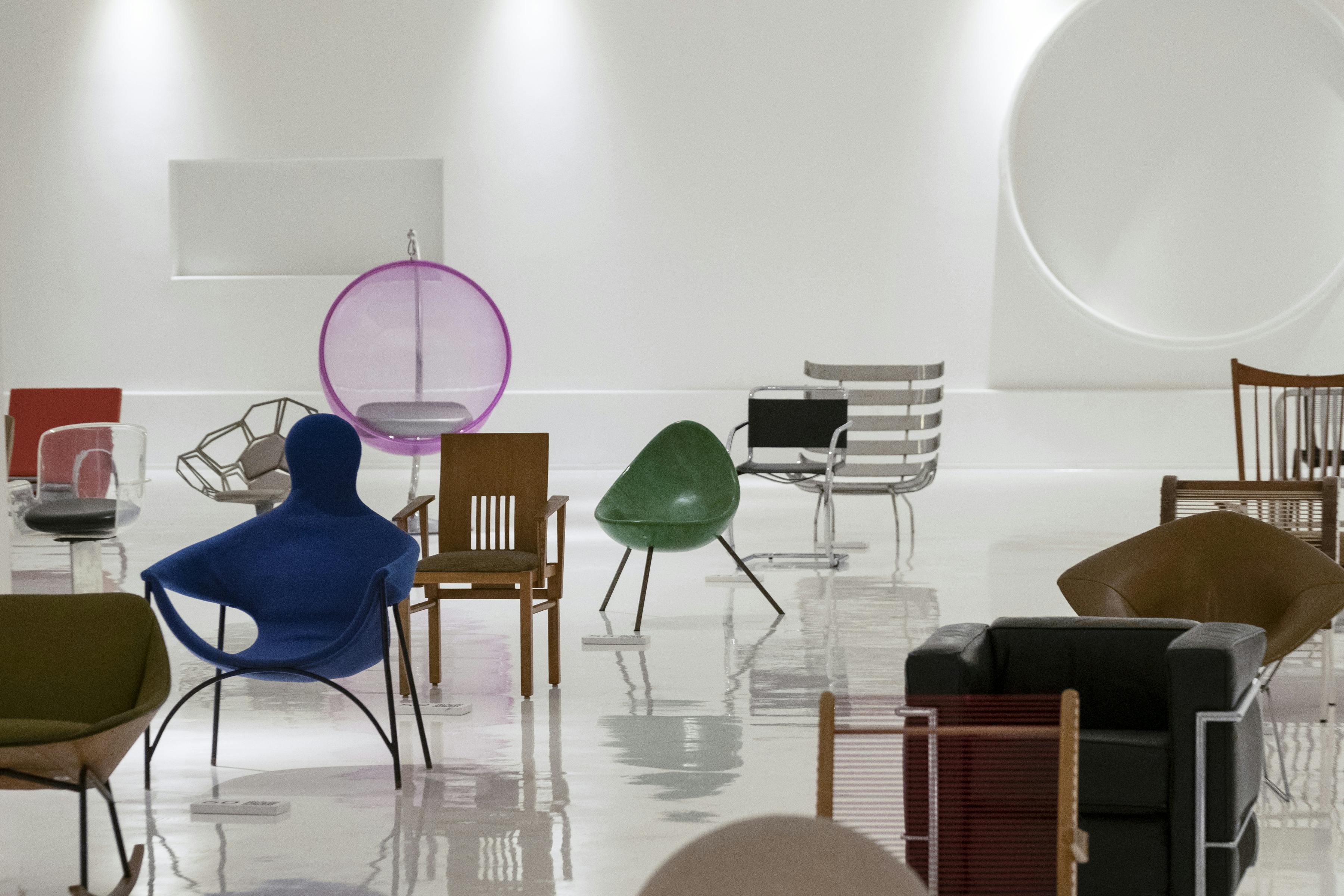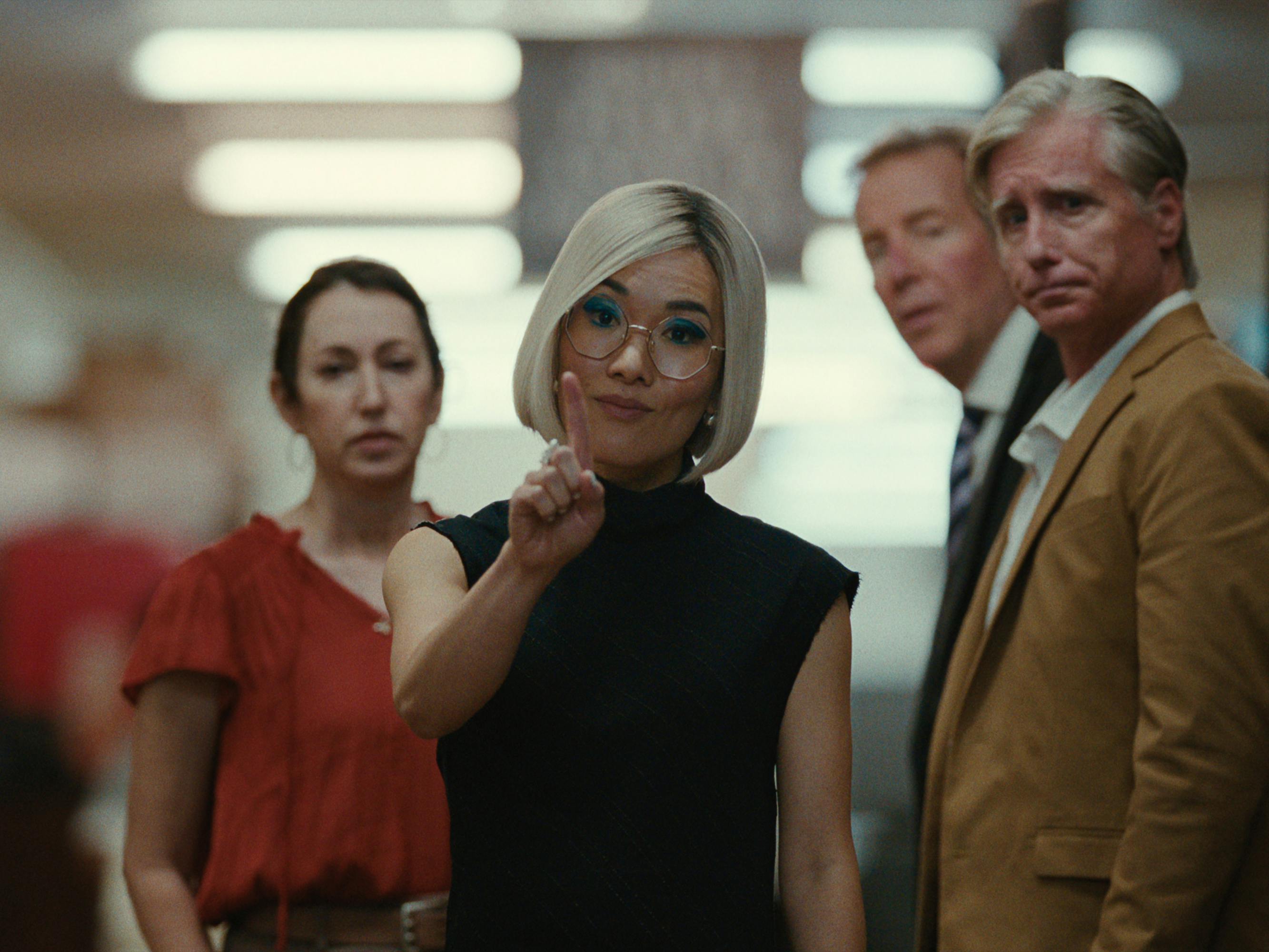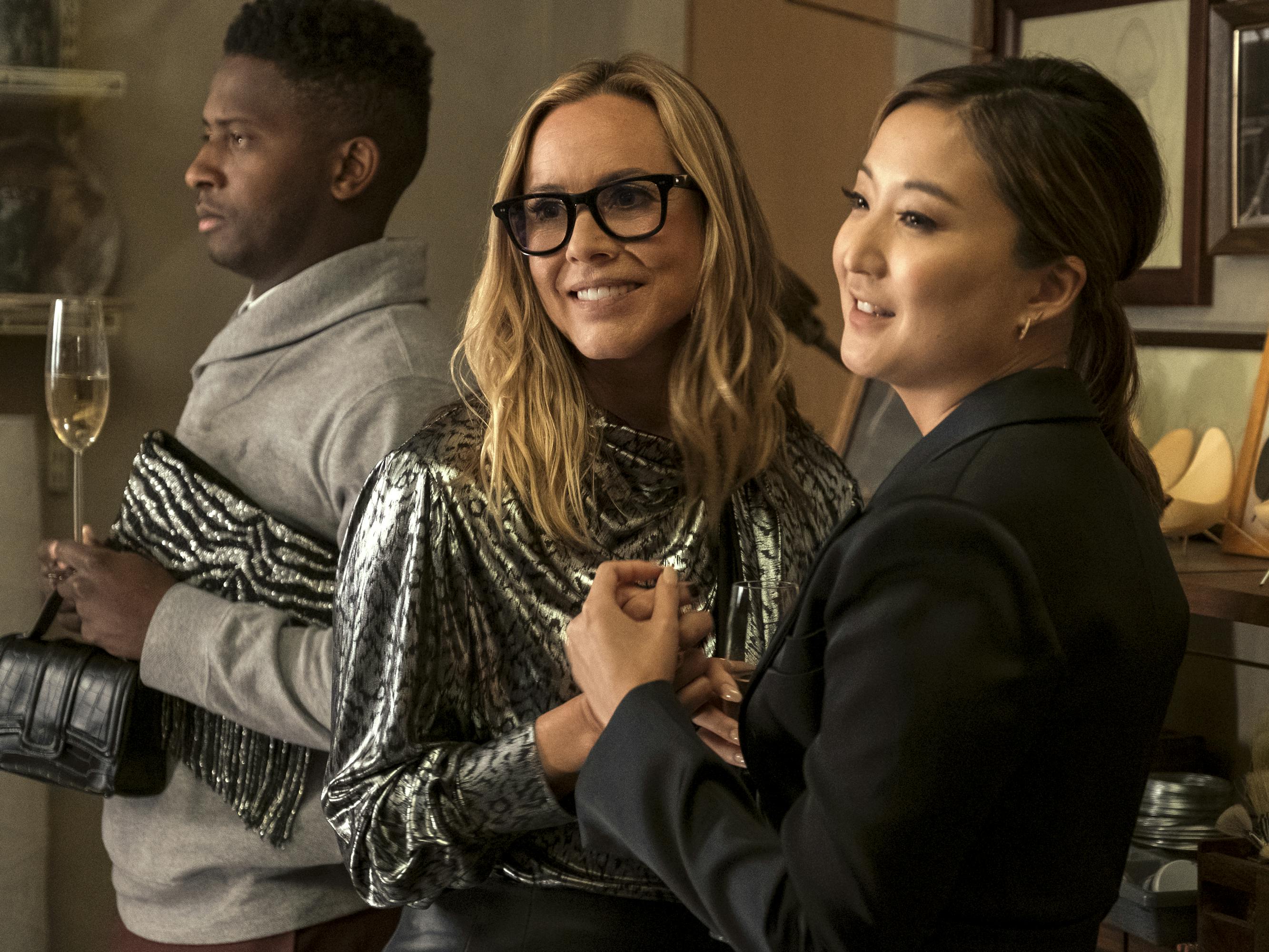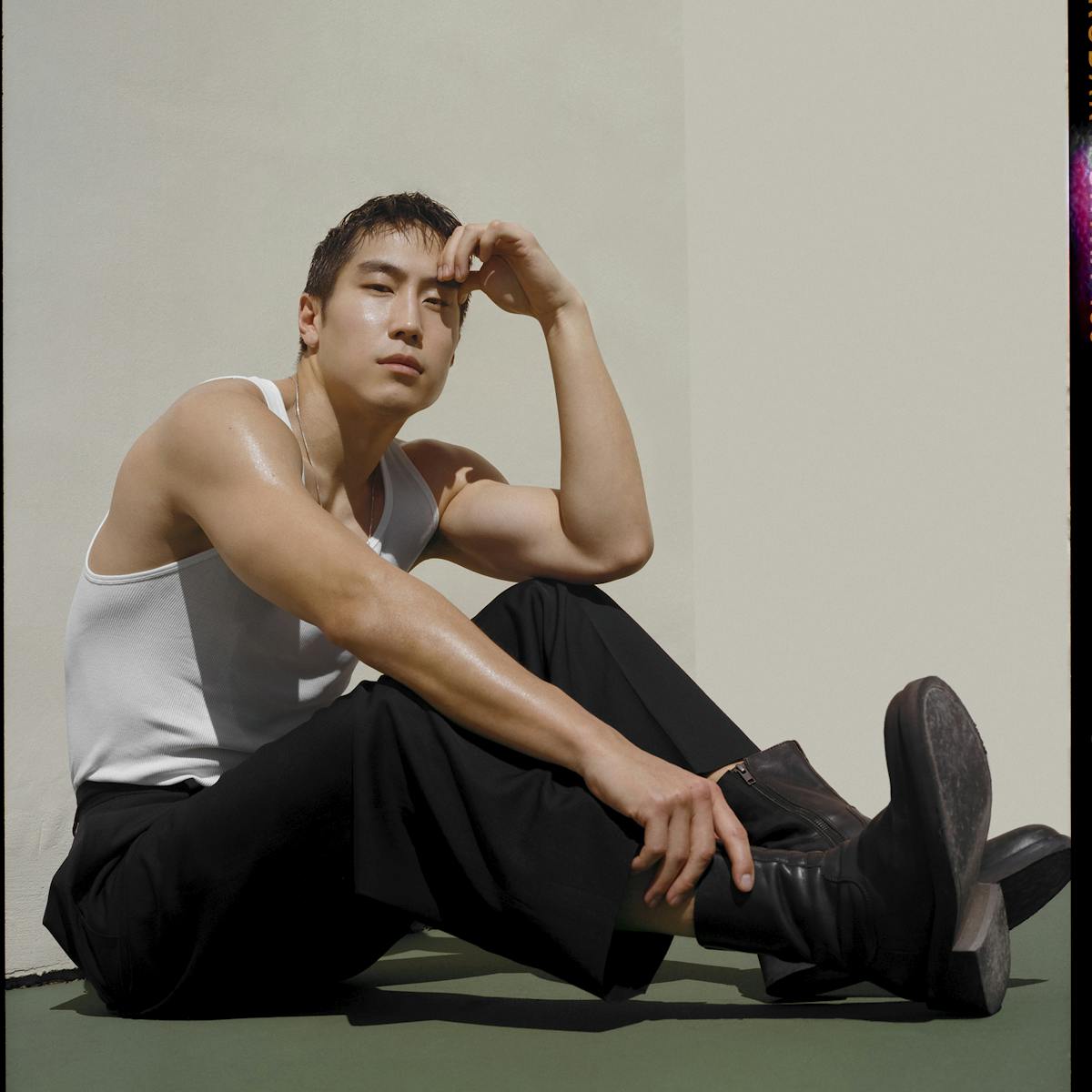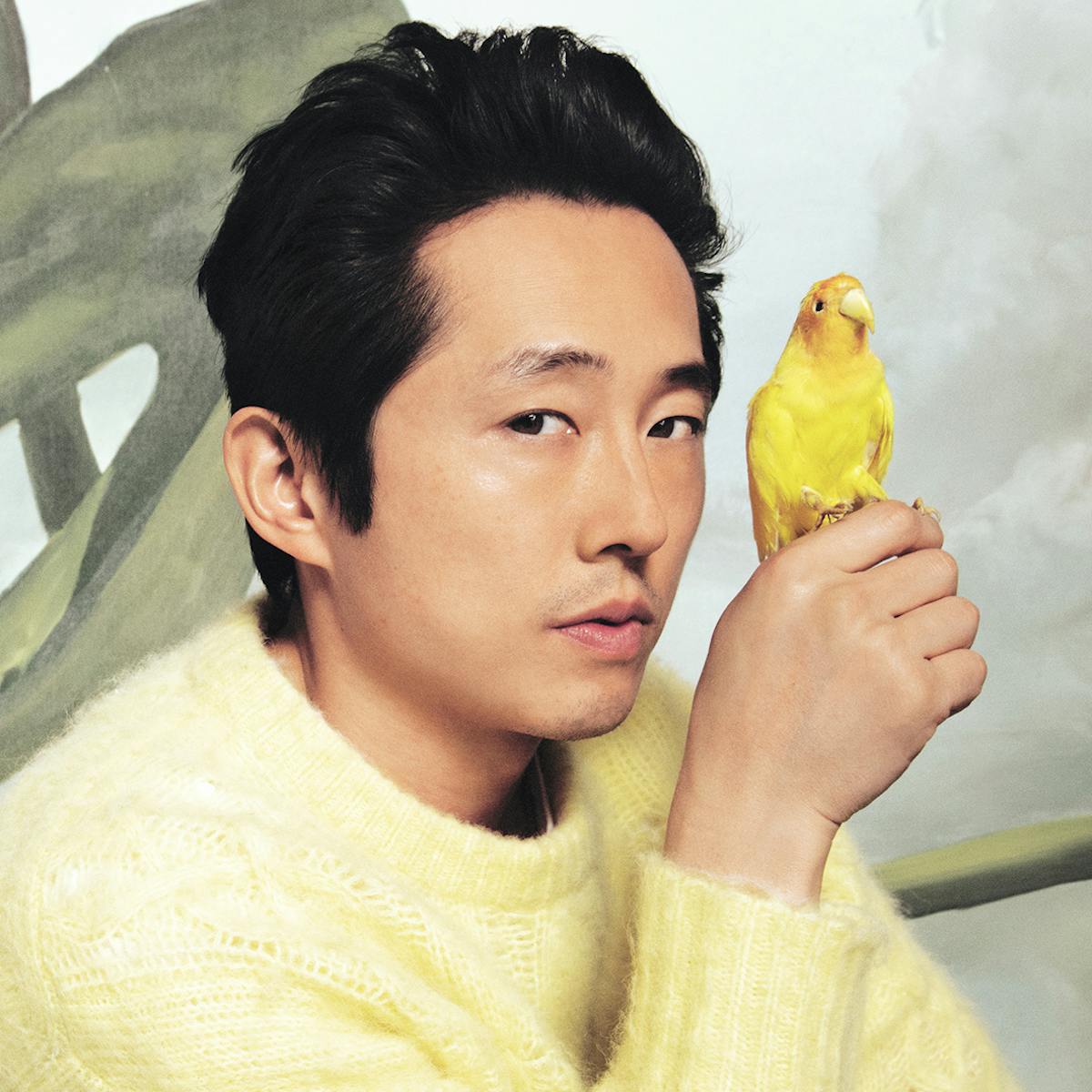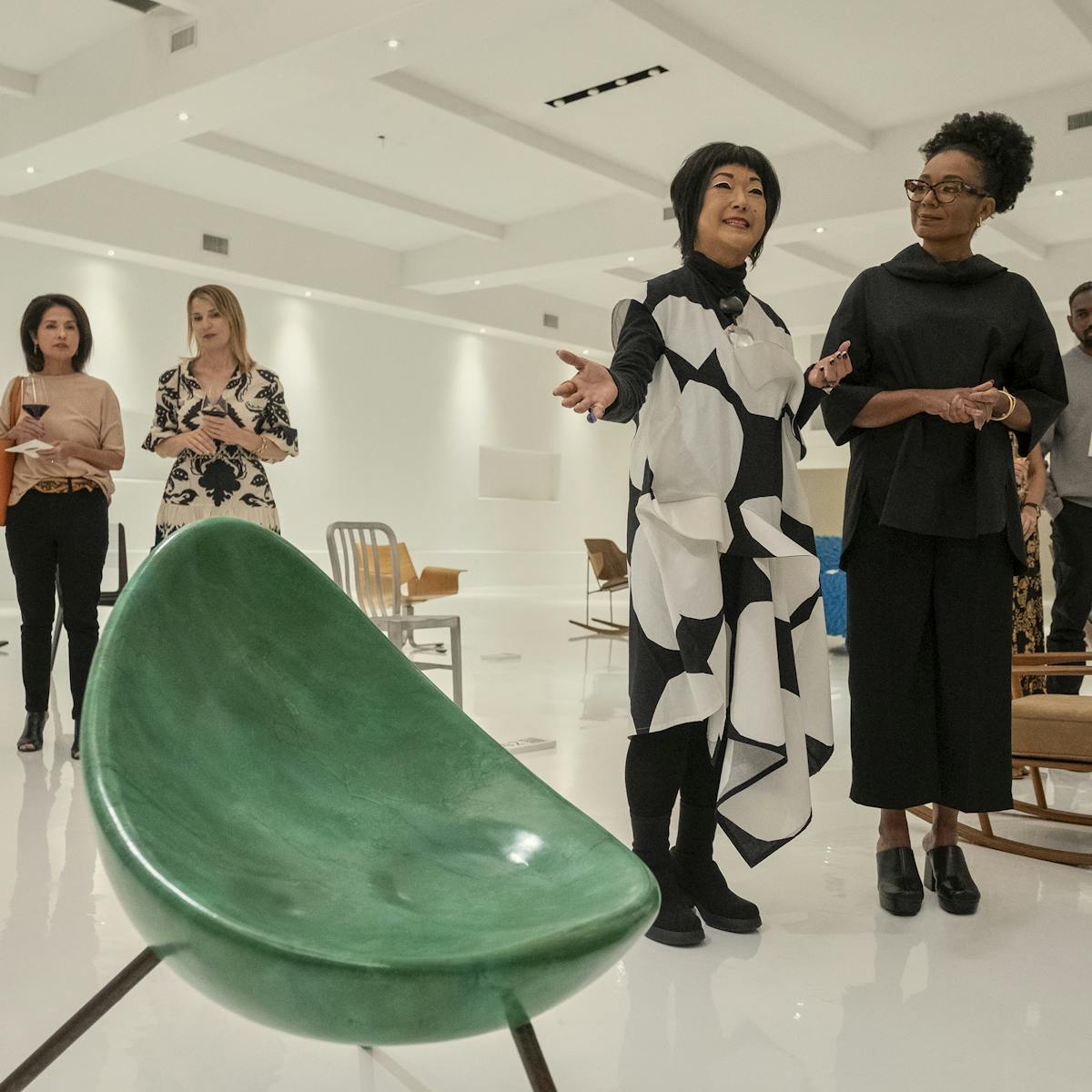BEEF's craftspeople talk about curating the controlled, subtle veneer at odds with the characters' psychological unraveling.
For all of its brilliantly intersecting plotlines, intriguing Easter eggs, and remarkable creative flourishes, the essence of BEEF — the explosive limited series from showrunner Lee Sung Jin — can be summed up with three r’s of a sort: rage, repression, and revenge. As Danny Cho (Steven Yeun) and Amy Lau (Ali Wong) are pulled deeper into each other’s orbit with each successive episode, these are the driving forces that move the story toward its violent denouement. If these three elements can be seen as the show’s key ingredients, then wealth — whether in abundance or a lack thereof — is arguably the pot in which they are all brought to a boil. From Danny’s plans to buy his parents a home to Paul’s crypto capers, the acquisition and accumulation of money is an ever-present concern.
Even among Amy’s set, status and the pursuit of luxury quietly permeates the fabric of her life — exquisitely Instagrammable as it might be — as she attempts to achieve the impossibility of having it all. To bring this tension to bear, the show’s creative team combined elements of costume, hair, makeup, and set design to represent the nuanced ways in which wealth reveals itself among Amy’s cohorts. As Helen Huang, Dana Hamel, Nicole Venables, and Grace Yun tell Queue, the art of telegraphing that one has deep pockets is in the details, from the precision of a sharp bob that clearly requires high-maintenance upkeep to the presence of protected plant life on one’s personal estate.
Money talks, but in the world of BEEF, as it turns out, it also whispers.
Grace Yun
Production Designer
Because [Jordan’s home] was so vast and open, Sonny and I and our set decorator, Kellie Jo Tinney, started to think of her having her own exhibition gallery and collecting things. There’s a bit about cultural appropriation in there, and it’s also about collecting things that feel so out of the sphere of what an average person could attain. It’s not really about the object for her — it’s about how exclusive it is. I mean, even in the courtyard, she has Joshua trees. That’s a protected species of plant life, but she has them.
In terms of Amy’s aesthetics, she’s definitely leaning into the less-is-more minimalist style, like a Japanese Scandinavian feel. The wabi sabi aesthetic of imperfection is a part of the aesthetic, but really she’s perfecting the patina of what she wants her life to look like.
I think Amy’s character, she doesn’t want to be Jordan. She doesn’t want to be so ostentatious with her wealth, but she wants to not care about money because she came from humble beginnings, and economic security is one of the main goals that she’s constantly chasing. [Her home] was a mix of vintage and store-bought finds that Amy would reupholster — I guess, her version of upscaling.
Art objects can really help propel intent, be used to tell the narrative, and also say something about a character. With George in particular, he’s kind of a nepo baby art child. I think it was important that he had his father’s legacy looming. In the art world, you see a Picasso being sold for tens of millions of dollars. It’s become this commodity, it’s about stature and what you can own and obtain.
Danny actually has an appreciation for George’s artwork, and it feels special to him that he could have a piece of artwork that he particularly liked. There’s a scene where he’s talking to George as [he’s pretending to be] Zane and George is like, “Oh, that stuff is no good anymore.” And Danny is crestfallen because he thought he had a piece of something that was part of their world, a part of a world that he doesn’t even understand, and now it’s been devalued by them. The idea of economic status and clout determining the value of something is all throughout the show.
Helen Huang
Costume Designer
The script is very interesting because there are so many subcultures of Asians featured from different geographical regions. When I was reading it, I knew in my mind what I wanted Danny and Paul to look like because that world in particular is a world I’m very familiar with. It’s my brothers and the boys I grew up with. A lot of that was from memory.
Amy’s world, I also know — even though her house was set in Calabasas, it felt very Silver Lake-y to me in terms of the aesthetic that I wanted to do. I thought that it would be really interesting if she was in these colors — whites and creams — that people are scared to wear all the time because you don’t want to spill on yourself. It’s this very controlled palette, but then she’s sort of boiling up underneath.
Texture was really important because with whites and creams, if there wasn’t any texture, all her outfits would just look the same. We were looking for brands that don’t put any iconography on their bags, nothing that really shows. We purposely stayed away from things that people could identify. Amy wore a lot of Lemaire, she did Margiela, Pleats Please, Sophie Buhai, Marsèll for shoes, very boutique-y brands, things that we think will sort of say something without being loud.
With Jordan [played by Maria Bello], we thought of her as a collector. She collects rare artifacts. She collects textiles from all around the world. In a way, Jordan is the ultimate appropriator. She goes to all these countries and she buys all these things, but I think that, in her mind, she’s being very sincere, that she’s really interested in other cultures. We focused on making her very minimal but having a more bohemian vibe instead of being someone who just buys a lot of labels. She could buy anything she wants, so why would she buy that? She buys experiences.
Nicole Venables
Hair Department Head
When I heard about the [show’s] extreme hair changes, I was like, “I’m in.” Sonny is the most incredible visionary. He really knows what he wants, but then he invites you into his creative process.
For Amy, I just showed up with, I don’t know, 40 wigs. We just tried all these looks and took tons of pictures and Sonny would pop in and then we’d send him pictures. I knew we were going to do blonde, we just weren’t sure exactly what cut. The costumes were brilliant and that set the stage. We wanted sharper, cleaner edges, [which is why] we went with the bob instead of a more modern kind of shag cut. That sort of set the tone to match up and cultivate this quiet luxury.
Maria Bello has a friend, Carmen Busquets, who was our muse, if you will. She was our North Star. She has long, blonde hair, but it’s not your traditional “done” hair, it’s sort of undone, more natural. Then her chignons sometimes had accessories in them from one of her trips, or jewelry, because she’s so eclectic and well-traveled and exquisitely wealthy.
[Amy’s mother-in-law] Fumi was also a fun project. I woke up the morning I was going to meet [actor] Patti [Yasutake] and I don’t know why, but I thought, “Oh my God, she’s going to wear wigs.” I think maybe two or three made it into the show, but we had seven or eight different looks for her. It just needed to be artsy, but yet her own design and unique.
Dana Hamel
Makeup Department Head
For Ali, we had these different looks happening, which was really cool. She had her understated look where everything was beigey, so we just kept the makeup for that really natural. When she does the blonde, then we went for it with blues and silvers. That was her transition to, Okay, I’m taking control, I’m a powerhouse now, and I’m going to kick some butt. We really vamped up the makeup to go with that, and then when she settles down and finds herself, I took the makeup down again.
For me, “a clean makeup” is a dewy foundation, a dewy look. A clean look is when you look at someone and don’t see the makeup — it’s not the central focus. The whole thing with Jordan was that she was always put together, that there wasn’t supposed to be a hair out of place — lips were always on, eyes were always done — and that she was a powerful woman. You want to look at all of it and see that strong woman, so we did makeup, but it wasn’t overpowering.
With Naomi [Amy’s frenemy, played by Ashley Park], we wanted her to be somewhere in between Amy and Jordan. Jordan’s makeup was a little bit heavier, but Naomi wasn’t taken down to Amy’s because she doesn’t want to be looked at as a stay-at-home mom. She is that, but she also has this career, and she’s got this and that going.
One thing that Sonny [Lee Sung Jin] is really great about is he doesn’t come in and tell you, “This is how everything is,” and then it’s a paint-by-numbers show. He lets you do your job. He allows you to be an artist, and he trusts you to create and have a vision as well. He really respects that. There was a great script, there were great opportunities for makeup, great opportunities for hair, makeup, and wardrobe to work together to actually create characters. And these were some of the most incredible actors — I mean, this was one of the best casts I’ve ever worked with.
